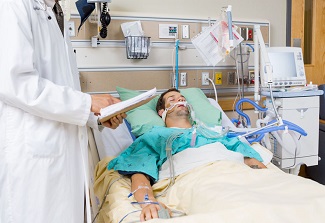Encouraging Change with Evidenced-Based Practice: Challenges in Communication
March 22, 2018
To tell you the truth, I was not exactly sure what I was getting into when I decided to go to Wound Ostomy and Continence (WOC) nursing school. My reference was my experience during my Clinical Nurse Specialist (CNS) clinical rotations where I worked with a colorectal surgeon and the Nurse Practitioner (NP). The patients we saw had everything to do with a WOC’s expected body of knowledge. I thought of nothing else. I knew my CNS was not the end. WOC education awakened a passion for nursing in me that I thought was gone. Little did I know that I was going to be playing a very different ball game; like hitting a jogger’s wall, I quickly learned how resistant people are to change.
Working With and Around Slow-Motion Change
My prior nursing experience as a traveling nurse and agency staff had prepared me to be flexible, trust in my knowledge and feel strong in my skills, and above all not to fear change, but embrace it and learn from it. I have found it frustrating and challenging to cope with how evidence-based practice (EBP) moves in slow motion in nursing. I have learned that change happens slowly and that change is hard, and it happens by winning one heart at a time. Winning one heart at time begins by how I communicate with others, and effective communication is in the ears and perception of the recipient. I quickly found out that it was necessary to change my ways of communication and adopt a consistent pattern to get my message across.
With lots of help and advice, I was given a script. For example, one of the first items on my WOC agenda was to remove the incontinence briefs from indiscriminate use. I introduced EBP literature addressing advances in moisture-associated skin damage (MASD) prevention and ways of cleansing, moisturizing, and protecting the skin with a barrier paste. I wrongly assumed that the Registered Nurse and nursing assistant staff would adopt this new guideline as their new initiative and professional practice and at least give it a try. I felt emotional and frustrated when I would be contacted to consult on a patient with MASD or hospital-acquired pressure injury (HAPI) where it was obvious the culprit was tissue trauma from the incontinence brief. I would like to share my script. It goes as follows:
- First, approach the individual: “Hi Kathy, I noticed the patient in 302 is wearing a brief.” Follow this by silence, and allow Kathy to respond why the patient is wearing a brief.
- Second, agree with Kathy: “Yes, in the past I, too, have used a brief on a patient, etc…”
- Third, give a new alternative: “Evidence has shown that keeping the diaper off allows the skin to dry…”
- Fourth, establish a commitment: “In the future, will you give this new practice a try? Leave the brief off the patient, cleanse, moisturize, and protect, etc.”
Everything starts with that first step, and following with each step one at a time with the application of what I had learned as a CNS to teach effectively. I made sure I addressed all levels of Bloom’s educational objectives and highlighted the cognitive, effective, and sensory domains to bring about change.
Changes in Skin Care to Prevent Moisture-Associated Skin Damage
The changes I wanted to make in skin care and the products we have available to use for patient care were extensively featured in the First Annual Skin Care Skin Fair conducted in the fall of 2015. It was a very successful event attended by all hospital departments and staff. This allowed everyone to see, touch, and feel the products; these made a difference in the transition and implementation of skin care and protection with the goal to reduce MASD and pressure injuries. Ultimately, the briefs were removed. They are still in stock but are used only as the exception and not the rule. 2017’s Third Annual Skin Care Skin Fair taught me that what I see and imagine in my head is not what I get, and this is what I got from the staff to communicate what they were thankful for.

About the Author
Fabiola Jimenez is a Wound Ostomy Continence Nurse and Adult Clinical Nurse Specialist at Detroit Medical Center Huron Valley Sinai Hospital. She has been a nurse since 1988, when she entered the field after graduating from the University of Oklahoma. Throughout her accomplished career, her work has demonstrated a dedication to caring for patients and a lifelong commitment to educating herself and others.
The views and opinions expressed in this content are solely those of the contributor, and do not represent the views of WoundSource, HMP Global, its affiliates, or subsidiary companies.










